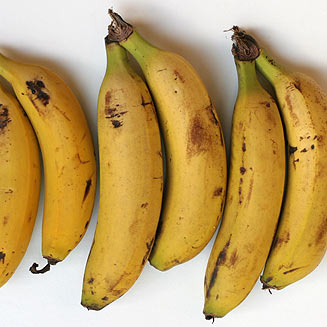|
Musa acuminata (Banana, Plantain) Life
> eukaryotes >
Archaeoplastida >
Chloroplastida
>
Charophyta > Streptophytina > Plantae (land plants)
> Tracheophyta (vascular plants) > Euphyllophyta > Lignophyta (woody plants)
> Spermatophyta (seed plants) > Angiospermae (flowering
plants) > Monocotyledons > Order: Zingiberales
> Family: Musaceae
All edible bananas orginate in whole or in part from Musa
acuminata which is native to the Malay Peninsula and adjacent regions. In
prehistoric times, people selected plants with seedless fruits and since then
they have been propagated vegetatively from suckers. Although there are huge
commercial operations exporting bananas from tropical regions to rich countries
in temperate regions, the majority of bananas are
grown by small farmers in tropical countries for local consumption.
 |
|
|
Musa acuminata (Banana). [photo H. Robertson, Iziko
©] |
|
Musa acuminata is a species native to the
Malay Peninsula and adjacent regions and is thought to have given rise in total
or in part to all edible banana varieties. Some of the varieties have arisen as
a result of hybridisation between Musa acuminata and Musa balbisiana
the latter of which is found from India eastwards to the tropical Pacific. This
hybridisation probably occurred as Musa acuminata plants (2n genome
= AA) were increasingly cultivated over the distributional range of Musa
balbisiana (2n genome = BB). Although the Musa acuminata
cultivars were sterile because of being seedless, they did produce fertile
pollen.
Despite the huge commercial operations exporting bananas
from tropical countries to rich, temperate countries mainly in North America and
Europe, it has been estimated that about 85% of all bananas produced, are grown
by small farmers for local consumption.
References
-
Sauer, J.D. 1993. Historical geography of
crop plants - a select roster. CRC Press, Boca Raton, Florida.
Text by Hamish Robertson
|
